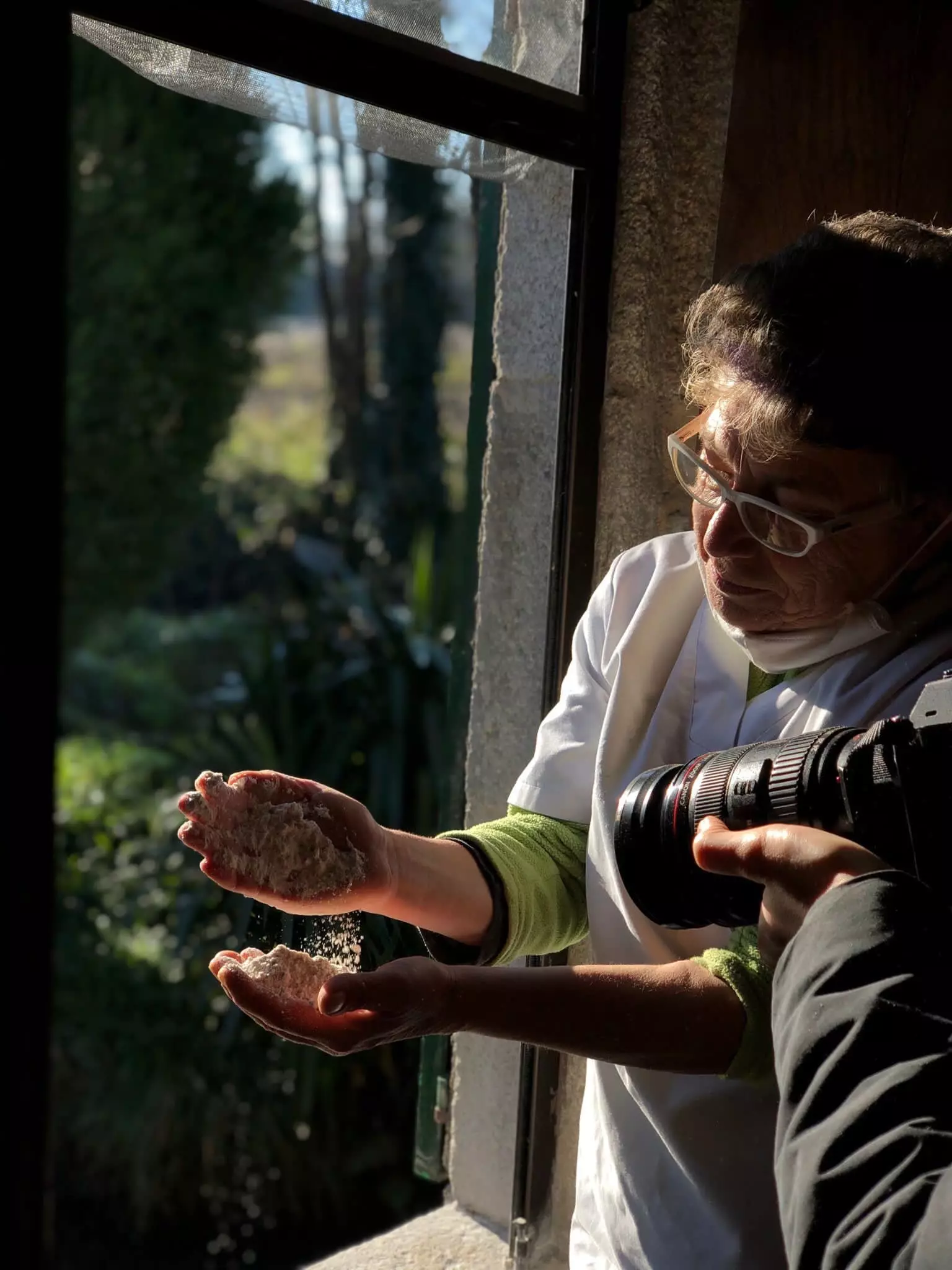
The miller Isabel Rivas
For six years, Isabel Rivas is a miller in Cospeito (Lugo): until then, she worked as a reception assistant in a chain of rural accommodation. She has lived in Toledo, in the Picos de Europa, in Sanabria or Bayona, but more than 40 years later, she returned to her town for a turn of the wheel, one of those you never expect.
When her company made an ERE, they fired her and she went to Cospeito for a few days to see her mother. She told him sadly that she was no longer going to be able to grind her wheat to make bread because they closed the mill: José, the miller, was sick.
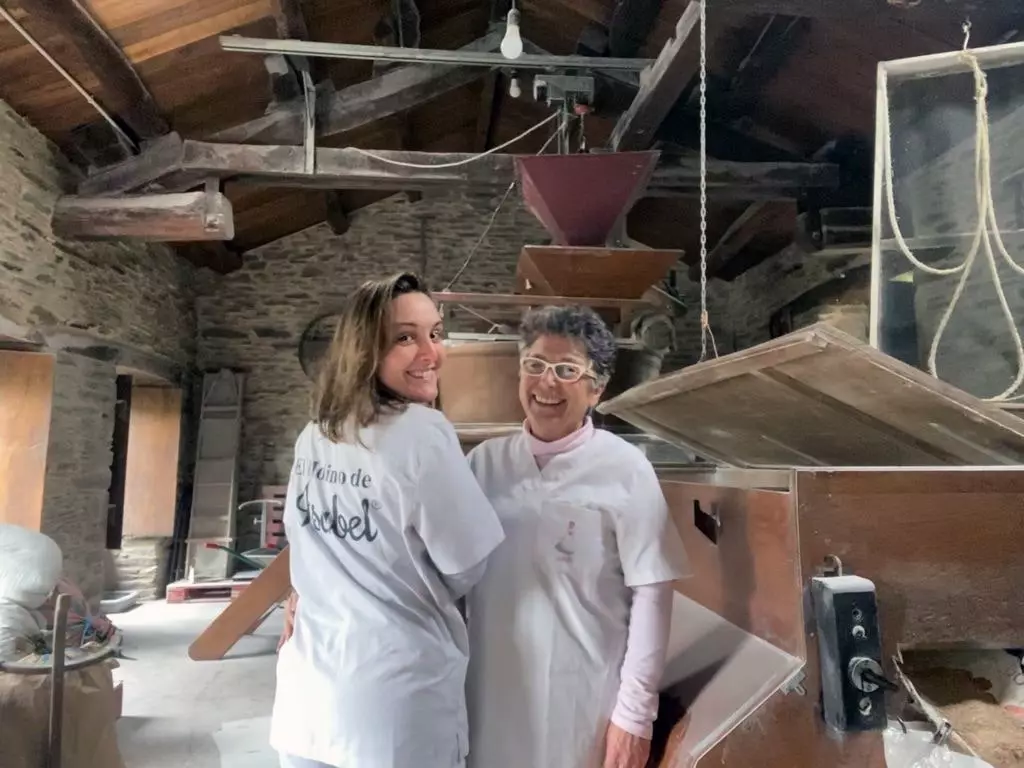
Elizabeth's Mill
in that area, all the neighbors are going to grind that muíño do rego because they have an oven at home and they make bread with their own flour. After a few days, the lightbulb went on for Isabel: she was not working and her husband was already retired. Then came one of those “what ifs” that change everything in a second.
She spoke with the miller, who showed her the mill: “it had leaks, it was full of holes, the mill was running out. I didn't want him to close it, I wanted to try. He told me that if I liked it, it was all mine. At that time, José ground once a week at most, for a baker and twenty neighbors”.
It was July 2014. Isabel and José shared a little more than four months of grinding, because in November he passed away. “I was left halfway through and wanted to throw in the towel because I still didn't understand the machinery, but his son, who is an agricultural engineer, offered me help. And people from the villages began to come to ask me not to leave it, that even if the flour came out a little thicker, nothing would happen, so we all started throwing it together”.
In February 2015 they started with the paperwork, because Isabel wanted to rent it. “They say that they support the rural and the return to the traditional, but it is false: they put all the possible obstacles in my way. They asked me for three estimates for each thing: blacksmiths, turners, carpenters… They made me put up mosquito nets, fire extinguishers, a water chlorinator that cost me 500 euros, and even a bathroom. It is a mill that is on top of a stream, so, on the other hand, they would not let me because I could not have a septic tank. They were all impediments.”
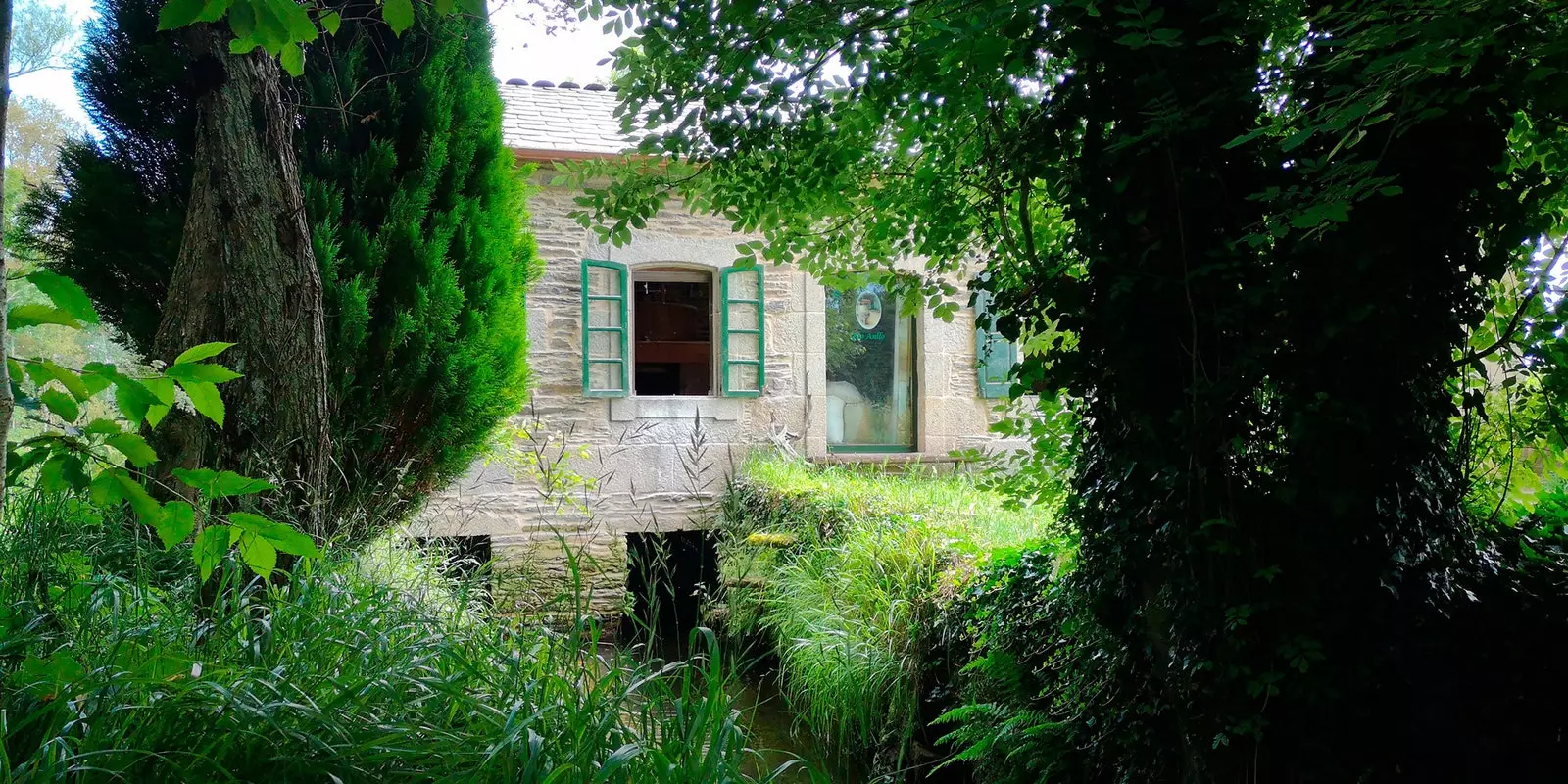
Isabel, with her restored water mill from the end of the 18th century, has proposed to provide a service to her community
She was only given a subsidy for being a woman, over 50 years old and affected by an ERE, but of the 14,000 euros she only saw 8,000. We ask Isabel how much she has invested in the mill: she calculates that about 50,000 euros.
She has paid for the forest trail she that she goes down to the mill, even though the mayor promised her that he would fix it. Also the axis, because it was crooked and they had to make a new one out of alloy. Although she recognizes that she does have the support of the neighbors. “I feel very happy to feel that I take care of my people and grateful for the friends who come to my flour. This is how it should always be: take care of each other.” Isabel's speech moves.
Her working day starts at 09.00. They stop at 1:30 p.m. to continue at 4:00 p.m. and finish around 8:30 p.m. “When the water is stabilized, the mill runs smoothly. We have been doing 14 hours a day for 3 or 4 months”.
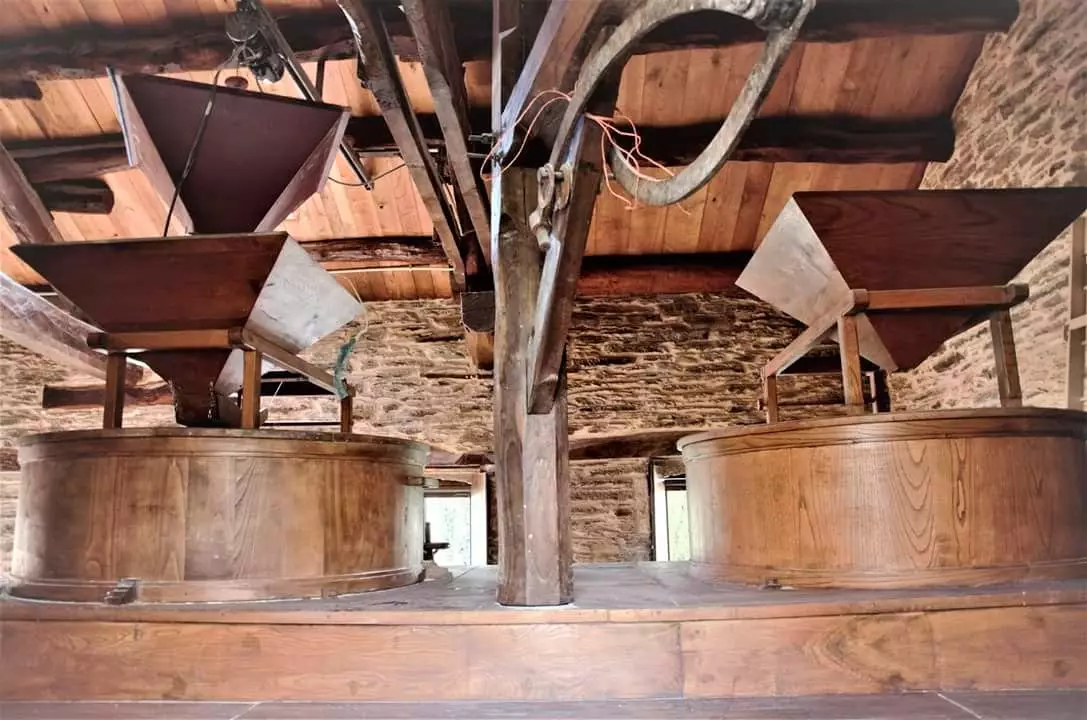
Here everything is done as before, as always, at the expense of nature
In Elizabeth's Mill , as it is now called, are at the expense of nature, because the Anllo river, which moves the turbine, sets the pace of work: “By grinding for 10 hours we get about 200 kilos of flour a day, but if we run out of water or if it overflows, we don't grind. I don't want to put an engine, because it would lose its essence”.
Here everything is done as before, as always: she loads the bags with a shovel by hand, they don't have an electric forklift, she makes the mixtures herself in a tub and they don't have a mixer or a packaging machine. It's all manual, except for the sewing machine and the little motor that raises the wheat.
Little by little, El Molino de Isabel has gained prestige, for the quality of its flours with Protected Geographical Indication. “Juan Luis Estévez, one of the best bakers in Spain, recommends our flours for his courses. And till Paco Roncero he has asked us for flour. Also Juanma Oribe, Daniel Jordá or Roque Carrillo They buy me loose bags”.
Isabel admits that she does not want a contract with a baker, because She wants to continue grinding for her neighbors callobre and caaveiro wheat (two local varieties), rye and spelled. "My caaveiro is from here, from cultivated crops, without chemicals and with animal fertilizers, not from irrigation." She talks about her cereal as if they were her children. They are all from the area except spelled, which is from Segovia: "She is the guest of the mill."
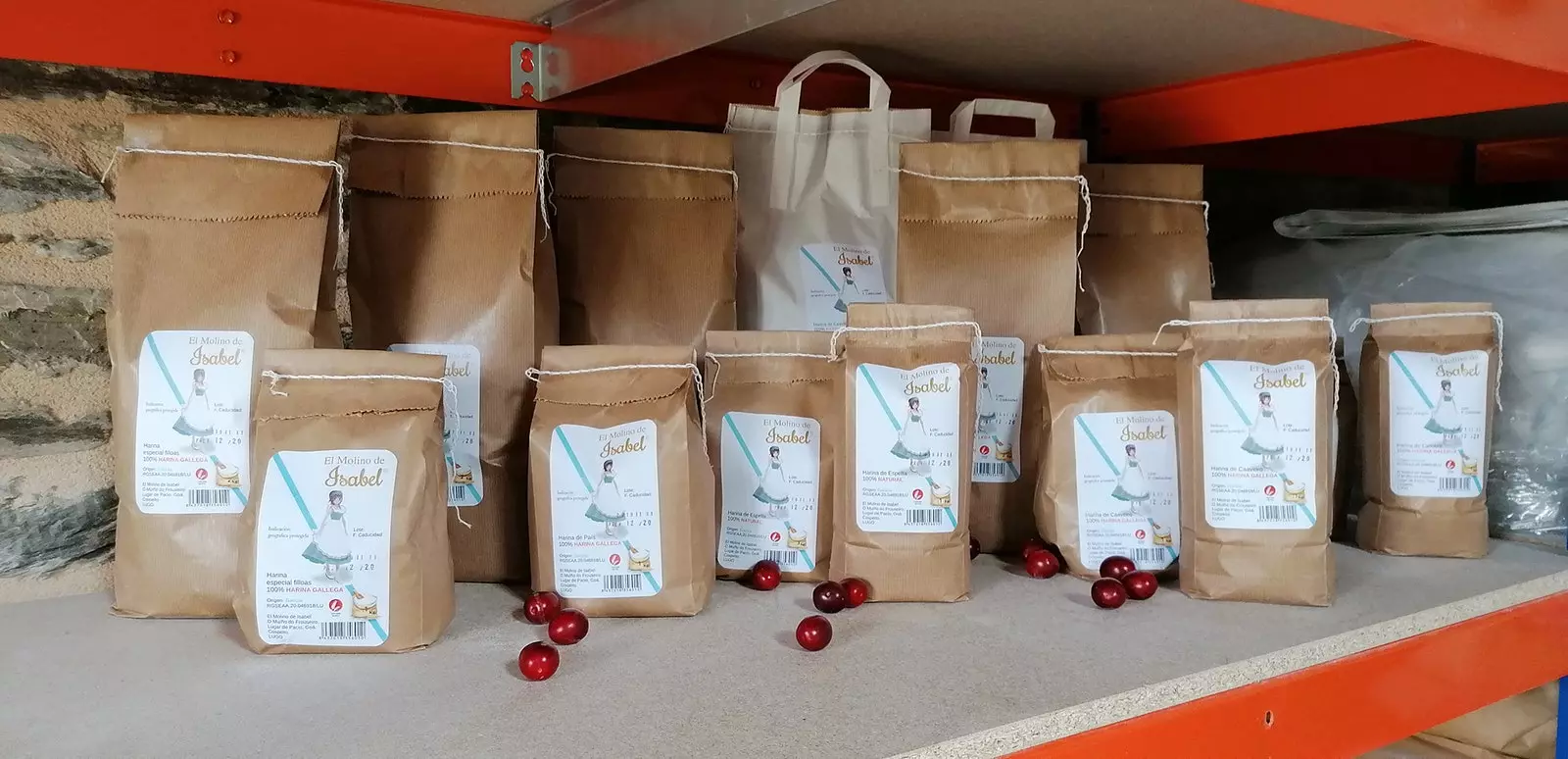
El Molino de Isabel has been gaining prestige, for the quality of its flours with Protected Geographical Indication
Also sells its flour, in packages of kilo, in the Campo Capela Cooperative (Pontedeume), in an organic products store in Portonovo, in a supermarket in Vigo and even in Barcelona, as well as through its online store.
“I started this project late, because I'm about to turn 60. At first I couldn't live, but I'm not here for money. I know I'm not going to become a millionaire, but I do what I want." Now he has an assistant, Patricia, a thirtysomething who will later continue with the project. “On weekends we go together to look for wheat. We are happy pampering the product and taking care of our people”.
There are hardly any mills like this left, but, fortunately, there are still Isabeles or Patricias.
